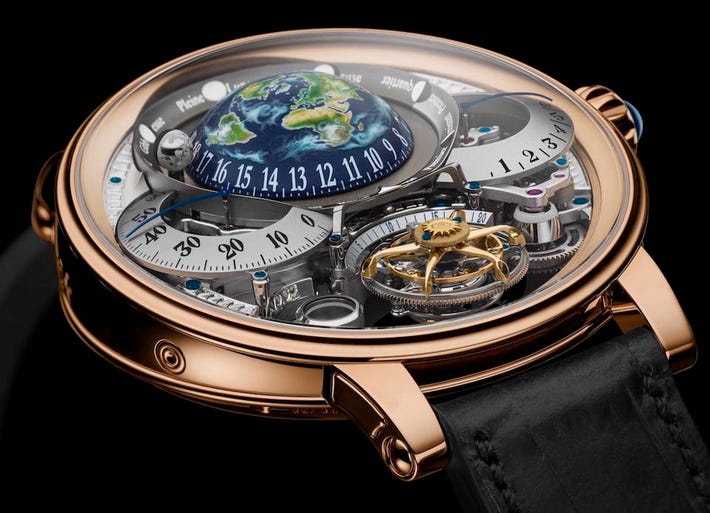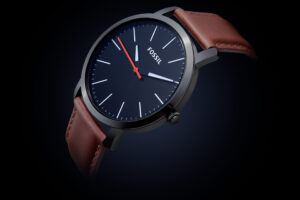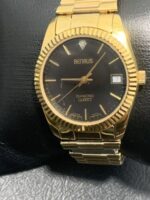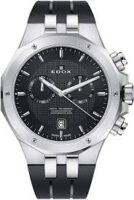












The History of Bovet Watch
Founded by Edouard Bovet (1797–1849)
who learn the watch making in his early life by his father who was a watchmaker
himself. He later in 1814 sent to UK to learn in the school of watch making
then to China in 1818 where he made several sale and like the Market there. In
1922 he started his watch company in London. The majority of his product
shipped to China to be sold there.
The company sold several times until
2001 when The Company was acquired by Pascal Raffy, its current president.
From http://www.bovet.com/maison/history/
1797
Edouard Bovet was born in Fleurier.
He is the son of a master watchmaker Jean-Frederic Bovet. –
1814
Edouard Bovet completeshis
watchmaking apprenticeship and leaves Fleurier with his brothers Alphonse and
Frédéric for London, at the time one of Europe’s leading watchmaking cities but
more importantly a major trading centre for clocks and watches
1818
Edouard Bovet leaves London on April
20th on board of the Orwell, a vessel operated by the East India Company. He
arrives on the 16th of August in Canton where he very quickly sells four
watches for the sum of 10.000 francs, the equivalent of one million dollar in
our day
1822
Edouard Bovet, living in Canton,
creates with his brothers who remained in London, and with his third brother
Gustave, a watchmaker in Fleurier, a general partnership with a view to trading
in watches with China. The first bill of the sale of the Bovet Company written
in London bears the date 1st May 1822. Faith with a rapide growth in business,
the company transfers its manufacturing.
1830
Construction begins on the BOVET
house in Fleurier commonly called “the Chinese Palace”, it will eventually
become the city hall named “Hôtel de Ville” in 1905 and today also houses the
Fleurier Quality Foundation, for which BOVET is one of the founding members.
1835
The Château de Môtiers, built in the
14th century and dominating le Val-de-Travers and Fleurier, is sold to
Henri-François Dubois-Bovet. His great grandchildren would make a gift of it in
1957 to the state of Neuchâtel.
2001
Mr Pascal Raffy becomes the owner
and sole shareholder of Bovet Fleurier
2006
Mr Pascal Raffy acquires DIMIER 1738
Manufacture de Haute Horlogerie Artisanale and DIMIER 1738 Manufacture de
cadrans et sertissage.
2006
Mr Pascal Raffy purchases from the
state of Neuchâtel the Château de Môtiers, classed as a historic monument. Here
he installs the BOVET workshops.
2010
Special Jury Prize of the Dutch
magazine 00/24 Horloges for the “Fleurier Amadeo Tourbillon 5 jours Heures
Sautantes” featuring a miniature painting of a “Geisha”. This distinction for
exceptional timepieces has been awarded only twice in eleven years.
2010
Introduction of the AMADEO
convertible case system
2010
Revolution awards the 2010 Prize for
Best Achievement in Watch Design to the BOVET Tourbillon OTTANTA® by
Pininfarina.
2014
Introduction of the Virtuoso II
movement, first in-house non-tourbillon calibre à spécialités horlogères
Here is the Key dates from https://www.hautehorlogerie.org/en/brands/brand/h/bovet-1822/
1797
Edouard Bovet was born in Fleurier,
the son of Jean-Frédéric Bovet, himself a master-watchmaker in
Fleurier in Val de Travers, a valley that runs through the Swiss Jura
mountains.
1814
Edouard Bovet completed his
watchmaking apprenticeship and, with brothers Alphonse and Frédéric, left
Fleurier for London, then an important centre for the manufacture but
most of all the hub of the European watch trade.
1818
Edouard Bovet left London on April
20th onboard the Orwell, a ship of the East India Company. He came
ashore in Canton on August 16th. Shortly after his arrival, he sold
four watches for 10,000 Swiss francs, the equivalent of one million dollars
today.
1822
Edouard Bovet, now living in Canton,
brothers Alphonse and Frédéric, who had stayed behind in London, and a third
brother, Gustave, a watchmaker in Fleurier, set up a partnership to sell
watches to China. The first bill of sale for the Bovet company was drafted in
London, on May 1st. Business thrived, and the company transferred its
manufacturing activity to Fleurier.
1824
Bovet began production of watches in
matching pairs. These were highly prized gifts for the Chinese, who considered
twins to be a sign of good fortune.
1830
Maison Bovet, better known as the
“Chinese Palace,” was built in Fleurier. In 1905 it
became the Town Hall and the seat of the Qualité Fleurier Foundation, of which
Bovet is a founder-member.
1835
The fourteenth-century Château de
Môtiers, which stands above Val-de-Travers and Fleurier, was sold to
Henri-François Dubois-Bovet. His great-grandchildren gifted it to the State of
Neuchâtel in 1957.
1840
Frédéric Bovet left London for
Fleurier where he managed the company’s watchmaking workshops, which then
employed 175 people.
1849
Edouard Bovet died in Fleurier at
the age of 52, by which time “an aura had formed around the Fleurier watch in
China where, for many years, a Bovet was the very epitome of a watch. Bovet
watches were even used as currency for trade within the country.” (La
Montre Chinoise; A. Chapuis)
1855
At the first Exposition Universelle
in Paris, Bovet was awarded a GoldMedal in the Luxury category for
a pair of enamelled watches, a commission from the Emperor of China.
Bovet continued to sell to China
until 1900, when the company began to lose ground to rival
production from Besançon in France and from the United States, as well as
countless imitations.
1889
Fritz Bovet, eldest son of Alphonse
Bovet, filed a patent for a single-pusher chronograph with
seconds hand, minute counter and hour counter that could
measure a period of up to 24 hours. His ingeniousmechanism meant
the chronograph could double as a second time zone.
1930
Bovet filed two patents: one for the
portfolio watch, a system that transforms a wristwatch into a desk watch, and a
second for thechronograph with single flyback hand, still a highly
desirable collector’s item.
1950
Bovet watches were sold in Geneva,
London, New York and Bombay.
1989
The revival of Bovet in Fleurier.
Since then the company has produced watches in very small quantities: fewer
than 2,000 a year. Over a third of these are one-off pieces, made
to order.
Bovet wristwatches are distinctive
in that they are housed inside a pocket watch case, with a crown
and a hinged bow at 12 o’clock. This distinguishing
feature, along with the serpentine hands, is directly inspired by the watches
Bovet made in the 19th century for the Chinese market.
2006
Pascal Raffy, the brand’s owner and
sole shareholder since 2001, bought three companies manufacturing
tourbillons, movements andbalance springs, grouped under the name
STT Holding, which became Dimier 1738. Bovet now had an independent
supply of manufacture-made movements. Pascal Raffy bought, from the
State of Neuchâtel, Château de Môtiers, now a historic monument. It became the
new site of Bovet’s workshops.
2011
Revolution magazine gave its Best
Achievement in Design award to the Tourbillon Ottanta®.
2012
BOVET and DKSH, the leading Market
Expansion Services provider with a focus on Asia have signed a collaboration
agreement for enhancing the position of BOVET timepieces in Asia. DKSH will
assume marketing, sales and after-sales services throughout Asia, while also
taking a strategic shareholding of 20% in BOVET and both its manufacturing
facilities (DIMIER).
https://www.bovet.com/
Please remember that this is an unofficial account of the history of this
company, Should you happen to find any mistakes with our information then
please let us know at



